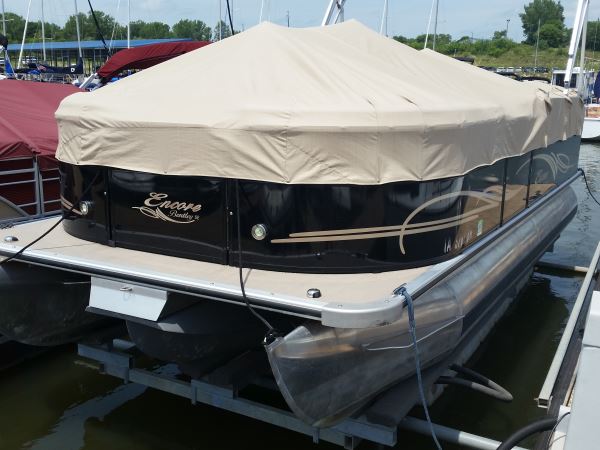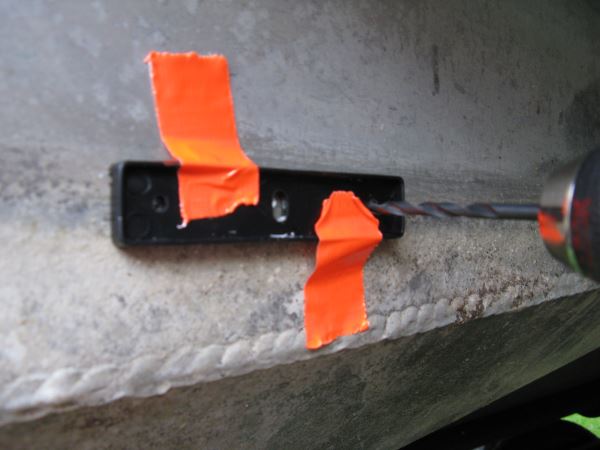
I never seem to like leaving anything as it was when I bought it. I don’t know what I have exactly. Maybe it is an attention deficit disorder.
It’s not a big deal for things around the house, like TVs, furniture, etc. But if I buy a car, motorcycle or a boat, I am making plans to change things before it gets off the showroom floor.
It’s not like I’m unhappy with my decisions, although I have been told that I often have “buyer’s remorse” within minutes of buying things. But my buyer’s remorse is not about what I bought; it’s wondering if I got the best deal, did I work hard enough for the best price, should I have asked for more extras.
For example, a few years back I drove to a boat dealer near Chicago to buy a project sailboat for a book. But when I looked at the boat it wasn’t the right boat for the book. Since I was there and I had money burning a hole in my pocket and I needed a boat (doesn’t everyone need another boat?) I asked what the deal was about the brand new Catalina Capri 22 sailboat sitting in the corner of the lot. The dealer said it was a left over, had been sitting for two years, with no one interested. The dealer thought it was because it was just too “plain.” The boat didn’t have any of the regular extras like a galley, ladder, head, etc. In my mind it was the perfect project boat. It was a blank canvas for do-it-yourself projects.
Think about it: a new boat without the new price and it needed stuff. I made a deal, hooked it up to the truck and started out the drive. Within five minutes I was wondering if I could have gotten a few hundred more off. My wife and daughter announced that my daughter had won. Apparently they had a wager on how long it would be before I was second-guessing my purchase. At least that part of me is predictable!
Buying new is good, but I also like a good deal on used. And used isn’t exactly the way I want it, because the old owner made it the way they want it. Whether it’s the engine, the carpet or even the radio, there is always something.
Even my brand-new Encore Bentley Cruise 200 wasn’t exactly what I thought I wanted. Before we took delivery of the boat I had the captain’s chair changed and an extra table installed.
Since then I’ve added a Bimini Buddy, Pontoon Wholesalers 3rd ‘toon and SeaStar Solutions Hydraulic steering. And of course there are quick and easy installs like the Sirius Satellite radio receiver and assorted hooks and cup holders.
Over the winter is one of the best times for me to make plans for the springtime updates. I make plans and start collecting the things I need for projects. My goals are always to make sure the projects are doable by the average person with a limited amount of space, time, money and skill. I’m working on owner DIY repairs, projects and preventative maintenance, not trying to do things that the boat dealer and service center need to be doing.
Maintenance shops are a vital part of the industry, but some things can be done at home in the driveway because it can be fun, sometimes entertaining and often cost-saving. Although I must admit that a few of my projects would have been cheaper if I hired them done. Not saying that I ever messed up and had to do things over… actually, yes, I am saying that. And the only thing that suffered was my pride and pocket book.

Anyway, are underwater and under-deck lights still a fad? I guess I might be late on this, but I finally added a couple of blue LED lights to the engine pod of my ‘toon. They are installed right at the water line so that they actually sit right under the water and shine out to the outside edges of the boat. I wanted to light up the engine and ladder area. I’m not using the underwater lights for fishing like some people; it’s just for the cool blue glow and lighting up the ladder.
What else do I have planned? I’m thinking since I have blue lights in the water I need to add lights under the edge of the deck. And then there is a rear carpet issue that is calling me. Or is it ADD? Not sure I know or really care. I really have fun doing these projects.
But back to the blue light special install. Surprisingly it was a pretty easy install. I bought two underwater blue lights from a big box store and a couple rolls of wire (red and black). I also had some crimp-on eyes for the ground wires and a crimp-on connection pin for the power wire, tape and a soldering gun and solder.
On the Cruise ‘toon, up under the steering or captain’s console there was an open accessory connection. I didn’t have to tap into any wires. If you don’t have a free connection you might consider adding an extra rocker switch (or a switch that matches what you have in your switch panel) or adding toggle switch to the panel along with a separate fuse.
Whatever you do it’s still a simple connection and install. When you are installing low-power lights you might be tempted to tap the connection into an existing switch and fused circuit, which is okay if the circuit isn’t already overused. You don’t want to put too much of a drain on the circuit and have the risk of overheating or blowing the fuse/breakers. In my case, I added it to the accessory rocker switch, which had an open connection under the console.

Next thing I had to figure out was where the lights were going to be installed. I kind of thought I would put them on the back of the ‘toons. But I have only one accessory mounting plate on the left ‘toon (which has the depth finder sensor). That would mean I would have to add a plate to the right ‘toon, which wasn’t going to happen, or hope a strong adhesive would keep it on the ‘toon. So my next thought was on the back of the engine pod, but I opted for the side of the engine pod shining out toward the ‘toons. One reason is I did want it to illuminate the ladder. Not that we spend a lot of time in the water after dark, but occasionally on those warm summer nights it nice to take a swim and have some extra light.
On the side of the pod towards the rear, I looked at the water lines and decided I would mount the lights just below the water line. I wanted them to be under the water most of the time. I guess I forgot to mention this: when buying lights make sure they are submersible, not just waterproof. Now that I keep my ‘toon on a lift they won’t be under the water all the time, but still submerged when we are on the boat, which is quite a bit.
I also looked at where I would run the wiring in the engine pod. I would connect it to the loom that was already there and route it to the battery and or console. If I wanted a really simple mounting system I could have installed a waterproof toggle switch in the battery box or in the back of the fencing near the rear gate and had a short run for the wires. A ground wire to the battery and a power wire to the switch and back to the battery through a fuse or breaker, maybe five feet of wire all together. Quick, simple, and I seriously though about it, but once I found the open connection on the accessory switch, I opted for running a wire to the console.
For the actual install I used the rubber base gasket as a template and taped it in the location, marked and drilled the holes through the engine pod for the stainless bolts and wires. I installed the lights with silicone around the bolts and electrical tape around the wires where they passed through the pod.
Since the battery on the Cruise 200 is mounted ahead of the engine on the back of the boat but outside the playpen area, I was able to connect the two ground wires (black wires) on the lights to another length of black wire and feed it up through the floor at the battery location and connect them to the ground (negative terminal) on my battery. I used a crimp-on eye for the connection. The power wires (red wires) I connected together and spliced them into a longer piece of red wire that I fed above the ‘toons along the other wiring harness. That wire was pushed up through the floor under the console with the rest of the wiring loom.

In the engine pod, I zip-tied the wires to the engine wiring harness and routed them as high as possible to keep them out of the water as much as possible. I know they will get wet, but what the heck. Make sure when you are routing wires and zip tying them to the engine cables that you have a loop of wire that moves with the engine in turns and when you raise and lower it. It would be bad thing to turn the engine and pull the wires out of the lights or pinch the wire and short out the system when you raise the engine.
Next was feeding the red wire through the floor, cutting to the correct length and adding the crimp pin. Once connected test the lights and bingo, ready for the water.
This simple mod was pretty reasonable too. The lights were on sale at $10 each. That plus a couple rolls of wire, tape and stainless steel nuts and bolts and I’m still under fifty bucks! Oh, I forgot, when I connected the wires together, I did solder those connections before taping. It’s not necessary, but runs less risk of disconnection.
Next I’m thinking I might install under the deck edge LED lights. One reason is when we park on the lake at night it’s nice to have more illumination than just the white anchor light. Sure, you are supposed to be able to see those from 360 degrees, but really, they aren’t that bright on some nights. I don’t want to light up my location like a spot light but I don’t want to be run over by some fast cigarette boat either.

